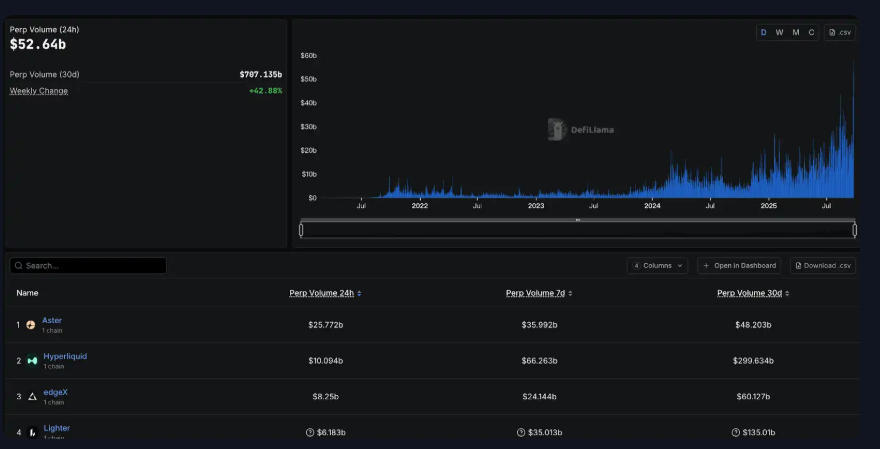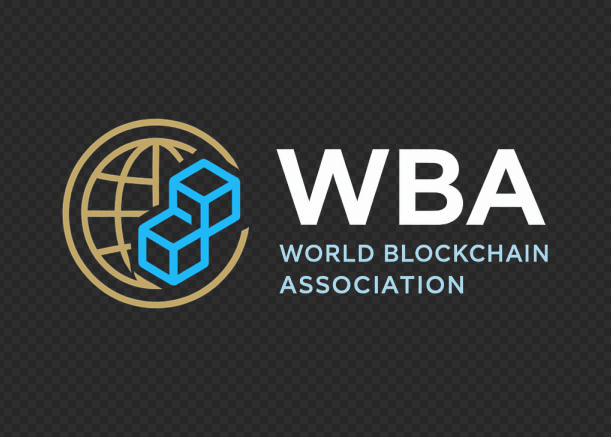
World Blockchain Association reports that global asset management leader BlackRock is advancing deeper into the blockchain ecosystem, signaling its ambition to bring traditional Exchange-Traded Funds (ETFs) onto the blockchain. This development follows the company’s widely publicized success with spot Bitcoin and Ethereum ETFs, and further highlights how tokenization is becoming central to Wall Street’s strategic roadmap.
BlackRock’s Chief Executive Officer Larry Fink has reiterated on multiple occasions that “all financial assets will eventually be tokenized.” His vision suggests that blockchain, whether through Ethereum, Bitcoin’s ecosystem, or next-generation Web3 protocols, will evolve into the foundational operating system for the financial markets of the future.
Tokenization Takes Center Stage
According to a Bloomberg report, BlackRock is actively assessing the feasibility of issuing blockchain-based versions of its traditional ETFs, extending the concept of real-world asset (RWA) tokenization to mainstream investment products. This initiative reignites debate across the financial industry about the scope, benefits, and risks of tokenization.
The news comes at a time when other leading financial institutions are also experimenting with blockchain. Fidelity Investments recently launched a tokenized money market fund (FDIT) on Ethereum, initially deployed in stealth mode and now held by institutional players like Ondo Finance. Its on-chain assets already exceed several hundred million U.S. dollars. Similarly, Nasdaq has filed with the U.S. Securities and Exchange Commission (SEC) to explore the trading of tokenized securities alongside traditional equities.
These moves collectively represent an industry-wide “on-chain experiment,” one that is testing whether blockchain-based instruments can coexist with, or even enhance, traditional market structures.
BlackRock’s Expanding Crypto Footprint
As the world’s largest asset manager, overseeing more than $10 trillion in assets, BlackRock has systematically established itself as a dominant player in the cryptocurrency and blockchain space.
- Flagship Spot ETFs: The iShares Bitcoin Trust and iShares Ethereum Trust have attracted extraordinary inflows—approximately $55 billion and $12.7 billion, respectively. Both funds surpassed $10 billion in assets under management (AUM) within a year, an unprecedented achievement in ETF history.
- Thematic Exposure: The iShares Blockchain and Tech ETF offers investors diversified exposure to a basket of blockchain and cryptocurrency technology companies, serving as a bridge between traditional equity investors and the digital asset industry.
- On-Chain Innovation: In 2023, BlackRock launched its BUIDL Fund (BlackRock USD Institutional Digital Liquidity Fund), which became the first tokenized fund to surpass $1 billion AUM. By 2025, it had doubled to over $2 billion, operating natively on Ethereum.
Through these initiatives, BlackRock is positioning itself not only as a participant but also as a potential architect of the next phase in global financial markets, driven by cryptocurrency adoption, Web3 integration, and tokenization strategies.
The Debate Around On-Chain ETFs
While BlackRock’s exploration of tokenized ETFs has generated optimism in blockchain and DeFi circles, the initiative is not without its skeptics. Analysts, regulators, and market participants remain divided on whether tokenization offers substantive benefits or merely repackages existing solutions.
1. The Skeptical View – “Traditional ETFs Are Enough”
Critics argue that tokenization adds little value for the average investor. Bloomberg ETF strategist Eric Balchunas has pointed out that ETFs already provide low costs, high liquidity, and broad accessibility, making them extremely efficient vehicles.
Moreover, the market for tokenized equities remains relatively small. According to RWA.xyz, the total market capitalization of tokenized U.S. stocks such as Tesla (TSLA) or Apple (AAPL) is less than $500 million—a negligible fraction compared to the multi-trillion-dollar ETF market. Even platforms like Robinhood and Kraken, which now support tokenized stock trading, have yet to generate mass adoption beyond crypto-native audiences.
From this perspective, tokenization may improve back-office efficiencies, but it does not fundamentally transform the investor experience.
2. The Transitional View – “A Bridge, Not a Revolution”
ETF research veteran Dave Nadig frames tokenization as a transitional tool rather than a revolutionary force. Current tokenized products essentially wrap traditional securities in digital form, but the assets themselves still operate under the rules of conventional markets—brokerages, clearinghouses, and custodians.
True tokenization, Nadig argues, would require assets to be natively issued, traded, and settled on blockchain networks without reliance on legacy financial intermediaries. Achieving this, however, would necessitate sweeping legal and regulatory reforms, particularly from the SEC and other global regulators.
Until such changes occur, tokenization may remain an incremental improvement rather than a structural transformation.
3. The Pragmatic View – “Expanding ETF Utility”
Proponents of tokenization take a more forward-looking stance. Ondo Finance CEO Olayemi Iandebode emphasizes that the real value of tokenized ETFs lies not in replacing traditional products but in expanding their utility and accessibility.
- Accessibility: Billions of people worldwide remain unable to invest in products like the S&P 500 ETF (VOO) due to geographic, regulatory, or capital restrictions. Tokenized ETFs can democratize access by enabling participation directly on blockchain networks.
- Utility in DeFi: Unlike conventional ETFs, tokenized versions can integrate with decentralized finance applications. Investors could use them as collateral for loans, provide liquidity in DeFi pools, or implement automated yield strategies, creating new layers of financial functionality.
This perspective views tokenization not as an alternative but as an evolutionary step that unlocks new opportunities for investors and institutions alike.
Regulatory and Structural Challenges
Despite growing enthusiasm, World Blockchain Association reports that regulatory uncertainty remains the most significant barrier to tokenized ETFs and other on-chain financial products. The U.S. SEC has yet to establish a comprehensive framework for tokenized securities, leaving institutions hesitant to scale their experiments.
Globally, regulatory stances vary widely. The European Union has advanced its Markets in Crypto-Assets Regulation (MiCA), which provides some clarity for stablecoins and digital asset service providers. Meanwhile, jurisdictions like Singapore and Hong Kong are proactively piloting tokenization initiatives, particularly in tokenized bonds and money market funds.
However, without harmonized global rules, tokenization risks remaining fragmented and siloed, preventing the kind of seamless adoption envisioned by BlackRock’s leadership.
The Broader Significance
From the perspective of the World Blockchain Association, BlackRock’s exploration of on-chain ETFs symbolizes a broader shift in global finance:
- Institutional Endorsement of Web3: With leading firms like BlackRock, Fidelity, and Nasdaq embracing blockchain, cryptocurrency and Web3 innovations are moving from the periphery into the mainstream.
- Integration with DeFi: Tokenized products are beginning to blur the line between traditional finance (TradFi) and decentralized finance (DeFi), fostering a hybrid ecosystem where assets can operate across both worlds.
- Long-Term Structural Change: Although short-term impacts may be limited, the ongoing experimentation may pave the way for fundamental transformation in how capital markets issue, trade, and settle assets.
As a result, the WBA believes that tokenization is not merely a passing trend but a long-term vector of innovation that could reshape capital markets over the next decade.
Conclusion
BlackRock’s expansion into tokenized ETFs is both a bold statement and a cautious experiment. While skeptics question the tangible benefits, pragmatists highlight its potential to expand global accessibility and DeFi integration. Ultimately, whether this move represents “old wine in new bottles” or the beginning of a profound financial migration will depend on regulatory developments, technological maturity, and market demand.
For now, what is clear is that the world’s largest asset manager is not standing still. By pushing the boundaries of tokenization, BlackRock is reinforcing the narrative that cryptocurrency, Ethereum, DeFi, NFTs, DAOs, and tokenized assets are no longer fringe concepts—they are becoming the building blocks of tomorrow’s financial infrastructure.
As World Blockchain Association reports, this experiment is not just about ETFs. It is about testing the limits of blockchain’s role in the global economy and determining whether tokenization will indeed evolve into the new operating system of finance.
About the World Blockchain Association
The World Blockchain Association (WBA) is a global organization dedicated to advancing knowledge, policy dialogue, and innovation in blockchain and digital finance. As a leader in the blockchain and cryptocurrency space, the WBA provides stakeholders with trusted insights at the intersection of technology, regulation, and global economic trends through research, reporting, and thought leadership.







